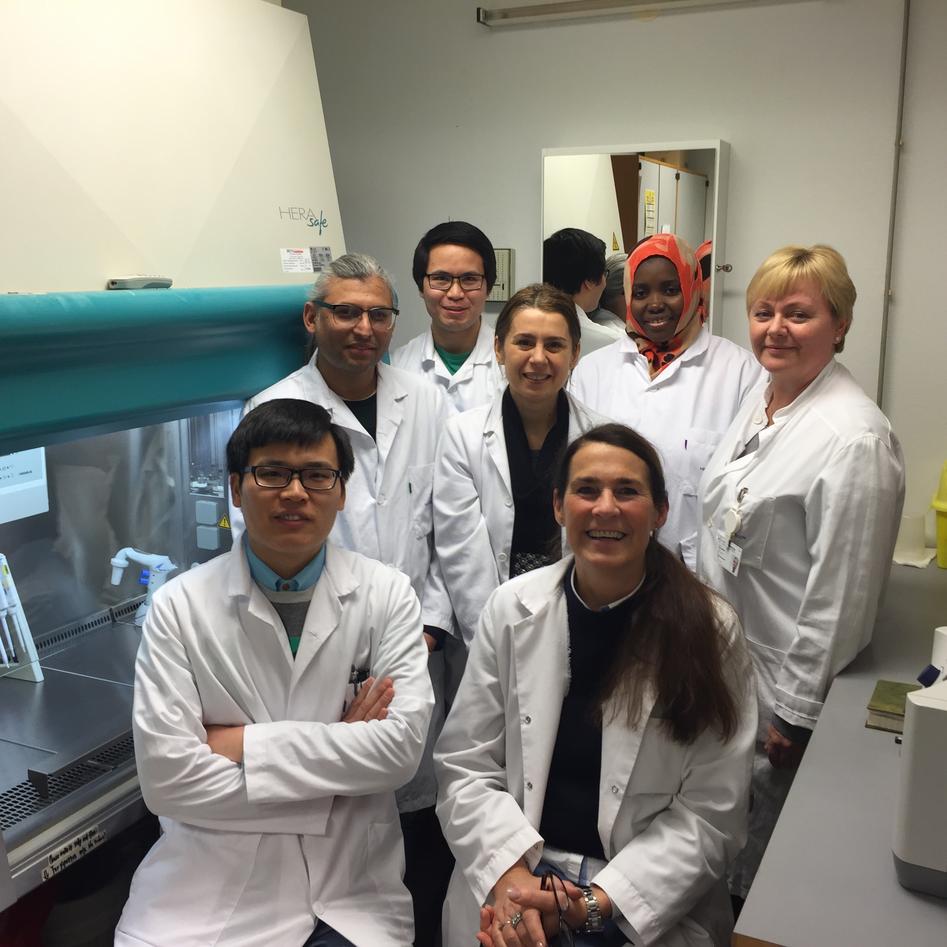Daniela Elena Costea
Professor Daniela Elena Costea and her team in the Experimental Pathology Research Group are focusing on on tumor-stroma interactions for identification of tumor microenvironment-related prognostic biomarkers.

Main content
Research focus
The research in the Costea group is focused on tumor-stroma interactions for identification of tumor microenvironment-related prognostic biomarkers.
Subprojects
1. Mechanisms of tumor-stroma (fibroblasts) interactions
2. Stroma as a source of prognostic biomarkers
3. Development of in vitro models as bio-tools for functional cancer diagnostic
Important results
The group has recently identified twelve differentially expressed miRs in stromal fibroblasts of head and neck cancer (HNC) lesions compared with normal oral mucosa (Rajthala et al., Int J Mol Sci, 2021), and miR-138 was one of them. The functional roles of miR-138 dysregulation in cancer associated fibroblasts (CAFs) from HNC have been studied. Ectopic miR138 expression reduced fibroblasts’ motility and collagen contraction ability and suppressed invasion of suprajacent HNC cells, while its inhibition resulted in the opposite. Transcript and protein examination after modulation of miR138 expression showed changes in CAF phenotype-specific molecules, focal adhesion kinase axis, and TGFβ1 signaling pathway. The group’s study showed that miR-138 in HNC-derived CAFs exhibits a tumor-suppressive function (Rajthala et al., Front Oncol, 2022).
The highest incidences of HNC are in Sub Saharan Africa and South-East Asia. Costea collaborates with many hospitals in these countries, among them in Sudan. In this study, the team evaluated patterns of immune cell infiltration at the invasive tumor front (ITF) in a prospective cohort of HNC patients attending Khartoum Dental Teaching Hospital. All inflammatory cell subsets investigated were found to be higher in the stromal compartment as compared to the epithelial one, except for the PD-L1+ subset. Stromal infiltration of CD8+ cells was associated with low tumor budding scores. The presence of PD-L1 was found to be associated with unfavorable overall survival, and Cox’s analysis using an age- and tumor-stage-adjusted model, identified epithelial PD-L1 expression at the ITF as the only independent prognosticator (Gaafar NM et al., Clin Exp Dent Res, 2022).
In order to develop novel therapies for HNC targeted at “normalization” of the tumor-CAF interactions, the group performs studies focusing on the tumorstroma interactions in normal oral mucosa. Using 3D organotypic models of normal oral mucosa developed from primary cells of healthy volunteers, they found that the fibroblast-derived growth factors GM-CSF and KGF are responsible for regulating major aspects of oral epithelial differentiation (Das et al., Eur J Oral Sci, 2022).
Future plans
The group is focusing on deep characterization of fibroblasts’ heterogeneity and their interaction with various subpopulations of cancer cells and inflammatory and endothelial cells by use of imaging mass cytometry (the Hyperion platform). Based on IMC findings, a panel of biomarkers that characterizes different subsets of CAFs in HNC and vulva cancer (VC) will be established.
The group is also developing robust in vitro 3D tumor models for dissecting tumor-stroma interactions at the molecular level and for high throughput drug testing in HNC, VC and penile cancer (PC).
